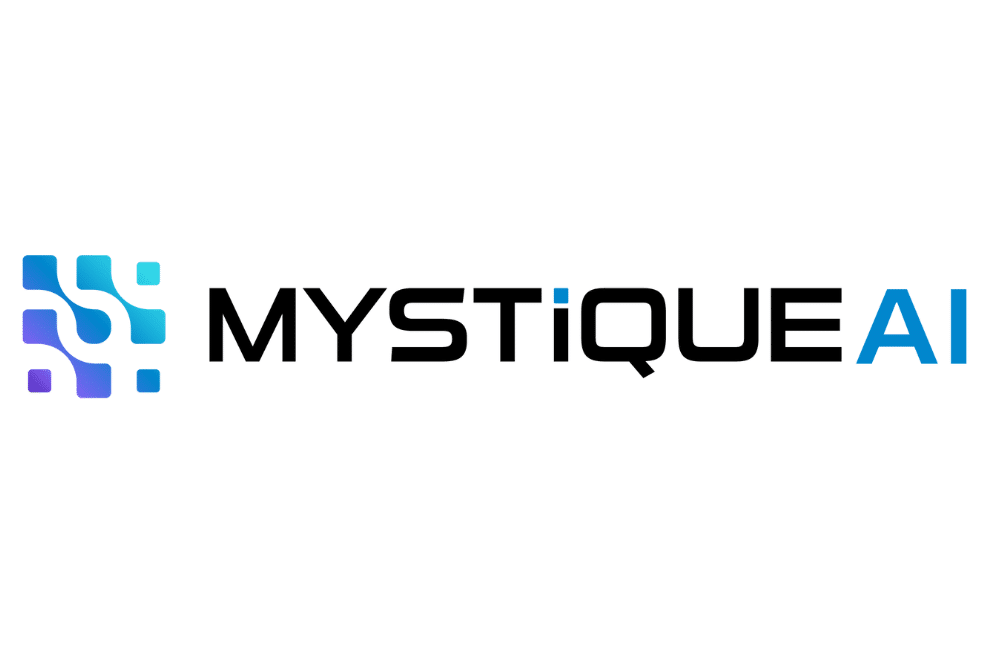Mastering Open Enrollment for Doctor Groups

A successful open enrollment period for brokers involves thorough preparation, clear communication, and efficient processes. Brokers should start planning well in advance, review existing benefits, and ensure they are up-to-date on industry changes. Effective communication, leveraging technology, and providing excellent support to clients and their employees are also crucial.
This comprehensive guide walks you through every phase of the open enrollment journey, providing actionable strategies that set you apart as a benefits broker who delivers exceptional value to clients.
Planning and Preparation: Building Your Foundation for Success
Early Planning Makes the Difference
Begin at least three months before the desired open enrollment period. This timeline gives you space to address challenges without rushing critical decisions. Start by scheduling strategy sessions with key clients to understand their goals, budget constraints, and any significant organizational changes that might impact benefits design.
Create a master calendar that includes carrier deadlines, client meetings, employee communication launches, and internal review checkpoints. This proactive scheduling prevents last-minute scrambles and ensures every client receives the attention they deserve.
Review and Evaluate for Continuous Improvement
Analyze past performance to identify areas for improvement. Pull participation reports from the previous year and look for patterns. Which benefits saw increased enrollment? Which ones declined? Understanding these trends helps you make data-driven recommendations that resonate with clients.
Dive deep into claims data and utilization reports. If employees consistently max out certain benefits while others go unused, you’ve found opportunities to rebalance the benefits portfolio. This analysis positions you as a strategic advisor rather than just an order-taker.
Stay Updated on Industry Changes
Keep abreast of changes in health insurance, legislation, and available options. Subscribe to industry publications, attend webinars, and maintain relationships with carrier representatives who can alert you to upcoming changes. New regulations, like updates to ACA requirements or changes to FSA limits, directly impact your clients’ benefit strategies.
Monitor emerging benefit trends that could give your clients a competitive edge. For instance, specialized coverage options like MGIS’s Disability Guard for Doctors™ address specific needs for medical practices that standard group plans often miss. Staying informed about these innovations helps you bring fresh solutions to clients.
Gather Data for Informed Decisions
Collect necessary information from clients to tailor benefits packages effectively. This includes current census data, budget parameters, and strategic objectives for the coming year. Use standardized data collection templates to ensure consistency and completeness across all clients.
Beyond basic demographics, gather qualitative insights about employee satisfaction, recruitment challenges, and retention concerns. These softer metrics often reveal opportunities to use benefits as strategic tools for addressing broader organizational challenges.
Prepare Materials That Drive Action
Develop clear, concise, and visually appealing resources for clients and employees. Today’s employees expect professional, easy-to-understand benefits information. Create materials that speak to different learning styles—detailed guides for those who want comprehensive information, quick reference cards for essential details, and video content for visual learners.
Customize materials to reflect each client’s brand and culture. This personalization shows attention to detail and helps employees connect benefits information to their employer’s overall value proposition.
Meet with Clients to Align Expectations
Schedule check-in meetings to discuss options, timelines, and important dates. These meetings should cover more than just plan designs and rates. Discuss communication strategies, enrollment meeting logistics, and success metrics. Set clear expectations about roles and responsibilities to prevent confusion during the enrollment period.
Use these meetings to educate clients about market conditions and help them understand how broader trends might impact their benefits strategy. When clients understand the “why” behind recommendations, they’re more likely to trust your expertise.
Quote and Finalize with Precision
Provide accurate quotes and present options in a clear, branded format. Move beyond spreadsheets to create presentation materials that tell a story. Show how different options align with organizational goals, impact employees at various life stages, and compare to market benchmarks.
Include decision support tools that help clients evaluate trade-offs between cost and coverage. Clear side-by-side comparisons, employee impact analyses, and multi-year projections demonstrate thorough analysis and strategic thinking.
During Open Enrollment: Executing Your Strategy
Effective Communication Drives Participation
Use multiple channels—email, webinars, and intranet—to communicate updates and deadlines. Different employees prefer different communication methods, so a multi-channel approach ensures your message reaches everyone. Create a communication calendar that builds awareness, generates interest, and drives action throughout the enrollment period.
Craft messages that emphasize value rather than just features. Instead of listing coverage details, explain how benefits protect financial security, support wellbeing, and demonstrate the employer’s investment in employees. This value-focused messaging resonates more deeply than technical specifications.
Leverage Technology for Efficiency
Utilize benefits administration software to streamline the enrollment process. Modern platforms reduce errors, save time, and provide better user experiences. Help clients select and implement technology solutions that match their size, complexity, and technical capabilities.
Beyond enrollment platforms, leverage communication tools like text messaging for reminders, mobile apps for on-the-go access, and video conferencing for remote employee meetings. Technology should make enrollment easier, not more complicated, so choose tools thoughtfully and provide adequate training.
Provide Support When It Matters Most
Be readily available to answer questions and address concerns from clients and employees. Establish clear support channels—dedicated email addresses, phone hotlines, or scheduled office hours—so people know how to get help. Response time during enrollment sends a powerful message about your commitment to service.
Train your team to handle common questions efficiently while escalating complex issues appropriately. Create FAQ documents and quick reference guides that empower your team to provide consistent, accurate information. The quality of support during enrollment often determines whether clients view you as truly valuable or just another vendor.
Simplify Information for Better Understanding
Use side-by-side comparisons, cost estimators, and visuals to explain complex benefits. Break down complicated concepts into digestible pieces. For example, instead of explaining deductibles, coinsurance, and out-of-pocket maximums separately, show how they work together through real-world scenarios.
Create employee personas that illustrate how different benefit choices impact various situations. “Sarah the Single Professional” might prioritize different benefits than “Mike the Family Man.” These relatable examples help employees see themselves in the benefits story and make more informed decisions.
Post Open Enrollment: Sustaining Momentum
Review and Audit for Accuracy
Analyze the enrollment process, identify any discrepancies, and update materials for future use. Conduct thorough audits to ensure data transferred correctly to carriers, dependents meet eligibility requirements, and all compliance requirements were met. Document findings and create action plans for addressing any issues.
This review process also identifies process improvements for next year. Maybe certain meeting times worked better than others, or perhaps employees consistently asked questions your materials didn’t address. These insights make each enrollment better than the last.
Provide Ongoing Support Throughout the Year
Continue to be a resource for clients and employees throughout the plan year. Create monthly touchpoints that keep benefits visible and valuable. Share wellness tips, remind employees about preventive care benefits, and highlight underutilized programs that could save money or improve health.
Develop new hire orientation materials that maintain enrollment quality year-round. Provide managers with benefits talking points for recruitment conversations. Your ongoing support reduces HR’s workload while ensuring benefits remain a powerful tool for attraction and retention.
Seek Feedback for Continuous Improvement
Gather feedback on the open enrollment experience to further refine processes. Deploy surveys at multiple points—immediately after enrollment to capture fresh reactions, and periodically throughout the year to assess ongoing satisfaction. Include both quantitative metrics and qualitative insights that reveal the story behind the numbers.
Act on feedback visibly. When employees or HR suggest improvements, implement them where possible and communicate what you’ve done. This responsiveness builds trust and shows that feedback leads to meaningful change.
Additional Tips: Elevating Your Service
Consider Virtual Meetings for Modern Workforces
Utilize video conferencing for virtual meetings, especially for smaller groups. Virtual sessions offer flexibility and can actually increase participation by removing geographical barriers. Develop engaging virtual presentation techniques using polls, breakout rooms, and interactive features that keep attendees engaged.
Record virtual sessions for on-demand viewing, extending your reach to employees who couldn’t attend live. This approach particularly benefits shift workers, remote employees, and those in different time zones.
Focus on Employee Needs
Tailor benefits packages to meet specific needs of the employee population. Analyze demographics, survey results, and utilization data to understand what employees truly value. For medical practices, this might mean robust disability coverage like Disability Guard for Doctors™ that addresses the unique risks doctors face. For tech companies, it might mean expanded mental health benefits or fertility coverage.
Avoid assuming all employees want the same things. Generational differences, life stages, and personal circumstances all influence benefit preferences. Your ability to identify and address these varied needs demonstrates sophisticated thinking that clients value.
Highlight Value Beyond Premiums
Emphasize the value of employer-sponsored benefits to attract and retain employees. Calculate and communicate the total value of benefits—often 30-40% of compensation—so employees understand their full rewards package. Create personalized benefits statements showing each employee’s specific benefits value.
Help employers tell their benefits story during recruitment. Develop materials that showcase not just what benefits are offered, but why they matter. This storytelling approach helps differentiate employers in competitive talent markets.
Promote Employee Engagement Year-Round
Encourage employees to actively participate in the open enrollment process. Create engagement campaigns that build excitement rather than treating enrollment as a chore. Use gamification, incentives, and creative communications that make benefits interesting and accessible.
Develop benefits champions within the organization who can share personal stories and answer peer questions. These authentic voices often resonate more than corporate communications. Support them with training and resources that empower them to be effective advocates.
Conclusion: Your Competitive Edge
Success in open enrollment requires orchestrating multiple moving parts across extended timeframes. From initial planning three months before enrollment through post-enrollment support and ongoing engagement, each phase demands strategic thinking and flawless execution.
The brokers who thrive understand that enrollment is not an event but a continuous cycle of planning, execution, evaluation, and improvement. By following this comprehensive approach—starting early, communicating effectively, leveraging technology wisely, and maintaining year-round engagement—you transform from a once-a-year vendor into an indispensable strategic partner.
Your commitment to excellence across all phases of enrollment doesn’t just improve outcomes for current clients. It builds a reputation that attracts new business, generates referrals, and positions you for long-term success in an increasingly competitive benefits landscape.
Start implementing these strategies now, regardless of where you are in the enrollment cycle. Every improvement you make compounds over time, creating a sustainable competitive advantage that benefits you, your clients, and ultimately the employees who depend on the benefits you help deliver. In the benefits industry, that comprehensive approach to excellence makes all the difference.
By following this comprehensive roadmap, you can transform open enrollment from a seasonal obligation into a year-round strategic advantage. By deeply understanding the unique world of doctors and delivering tailored, expert guidance, you become more than a broker—you become an essential partner in their long-term success.


